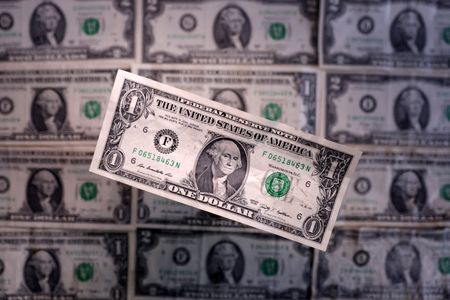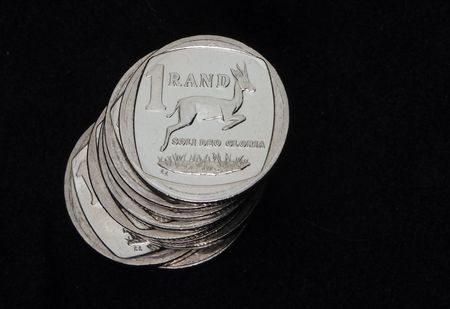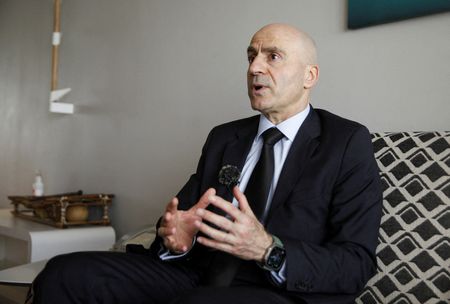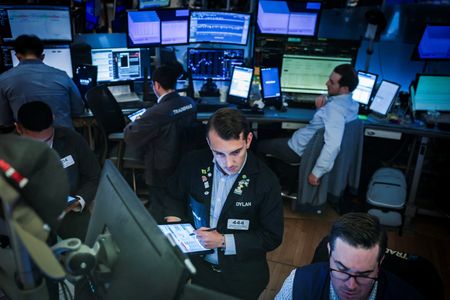By Jaspreet Kalra and Laura Matthews
NEW YORK/MUMBAI (Reuters) -The dollar rose against major currencies on Wednesday, rebounding from yesterday’s pullback as investors turned their focus to upcoming U.S. economic data for policy cues, even as worries persist over the Federal Reserve’s independence.
The euro touched its weakest level since August 6 and was last down 0.44% at $1.1591. Sterling declined 0.22% to $1.3450, while the Swiss franc slipped 0.09%, and the Japanese yen fell 0.37% against the dollar to 147.99.
That left the dollar index, which measures the greenback against a basket of currencies, up 0.32% to 98.57.
Although the dollar appears to have shaken off the immediate worries over Fed independence that followed U.S. President Donald Trump’s attempt on Monday to fire Governor Lisa Cook, the U.S. Treasury yield curve has steepened.
Cook’s lawyer later said she would file a lawsuit to prevent her ouster, kicking off what could be a protracted legal fight.
“I don’t think the markets are very concerned about the drama with Ms. Cook and the Fed. They are a little more concerned about what Donald Trump has been saying about wanting lower rates,” said Joseph Trevisani, senior analyst, FX Street.
“If the Fed starts to move on interest rates, the U.S. economy will pick up strength, and that is going to end up supporting the dollar.”
Since his return to the White House this year, Trump has relentlessly pressured the central bank to lower interest rates.
Money markets are pricing in a 88.2% chance of a 25 basis point rate cut in September, according to the CME’s FedWatch tool.
Elsewhere, political developments in France are the focus for the euro as Prime Minister Francois Bayrou battles to save his minority government ahead of a September 8 confidence vote over budget cuts.
A majority of French people want new parliamentary and presidential elections, opinion polls showed on Wednesday.
Elias Haddad, senior markets strategist, Brown Brothers Harriman in London, said he doesn’t think France’s political uncertainty is a material drag for the euro.
“It’s been a bit of a headwind for the euro and probably helped the U.S. dollar a little bit this week,” said Haddad. “But I think this is a country-specific issue for France, and it’s not a systemic issue for the Eurozone. That’s why I don’t think that we’ll see the drag to the euro, or I see the drive to the U.S. being limited.”
Investors will next week examine U.S. labour market and business survey data for clues on the future path of Fed policy.
Meanwhile, they will be keeping an eye on U.S. personal consumption expenditure data later this week, which if it “comes in as expected, I’m pretty sure the Fed is going to move (on a rate cut),” said Trevisani.
French government bonds steadied on Wednesday, a day after the yield on the 10-year benchmark bond climbed to its highest level in five months.
Meanwhile, preliminary data released on Wednesday showed that British producer output price inflation rose to a two-year high of 1.9% in June, up from 1.3% in May, adding to signs of inflationary pressures in the economy.
(Reporting by Jaspreet Kalra and Laura Matthews; Editing by Sharon Singleton, Barbara Lewis and Ros Russell)








